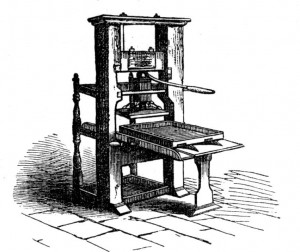
Other typographical symbols have an earlier origin, such is the case of the peculiar [&], better known as the ampersand. This symbol, whose form evolved from the calligraphy that gives it its Latin name et (it’s made up by the E and the T joined through cursive writing), was already in use two thousand years ago. At that time the custom was to represent the Latin conjunction in the form of a typographic ligature, hence the peculiar written flourish. Its most widespread modern name dates back to the first half of the nineteenth century, when it was part of the English alphabet (it was the twenty-seventh letter). The usual practice was to recite the alphabet and end with “X, Y, Z, and per se and,” which is to say: “X, Y, Z and, by itself, and.” By dint of babbled repetition, and per se and became, quite foreseeably, ampersand.
Of course, there are also symbols of a more recent adoption. The most significant case being the [@] symbol which, although already in circulation in the books of English merchants as a way of expressing a unitary cost (each at: an E within an A), explodes with the emergence of the e-mail and, many years later, Twitter. It is precisely this social network which leads me to think about the typographical consequences that may result from the current trend of condensing messages. What new symbols will be needed in this era when everyone wants to say more with less?
To read the original Spanish post go to:
“El curioso origen de los símbols tipográficos”





